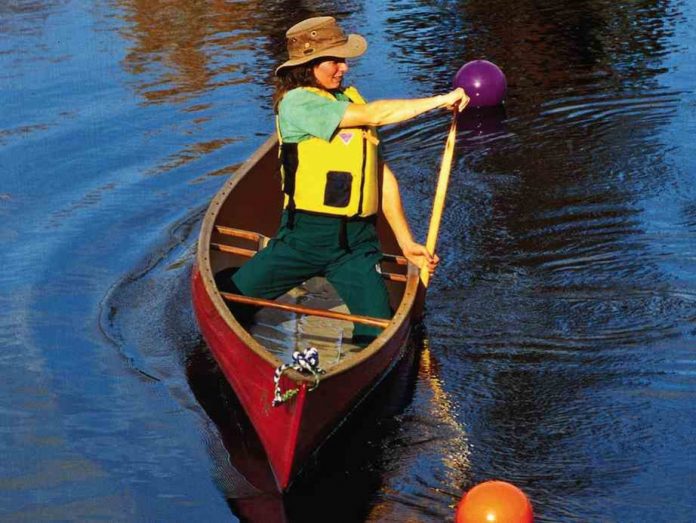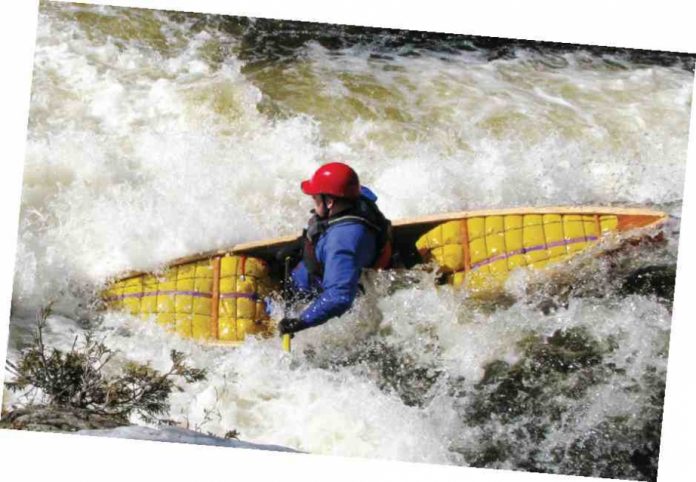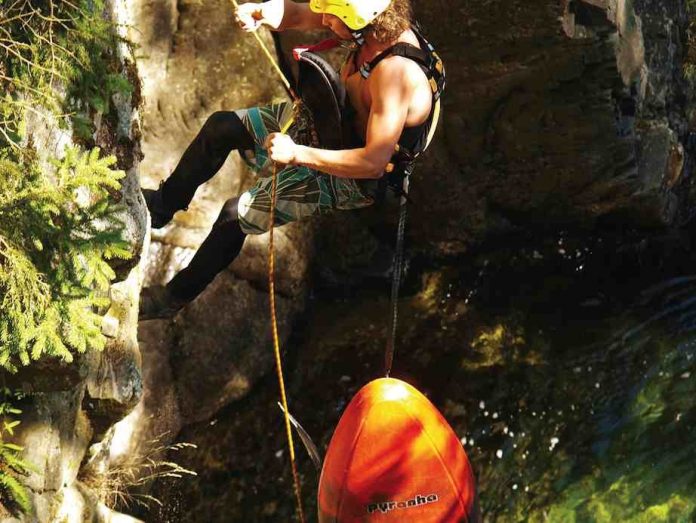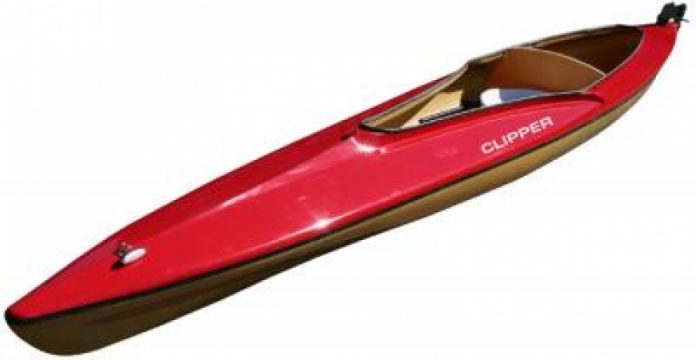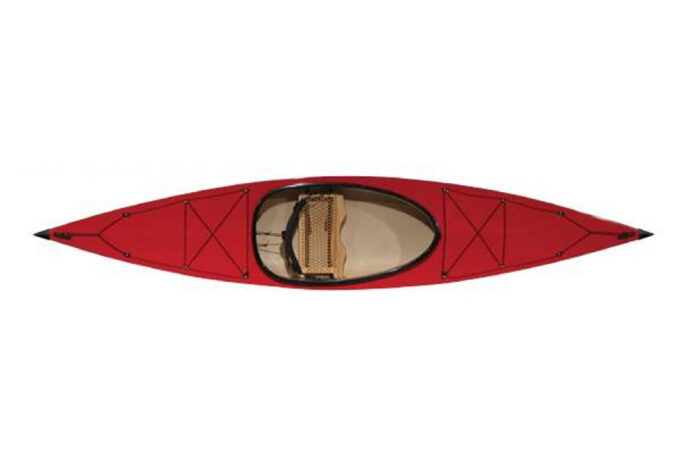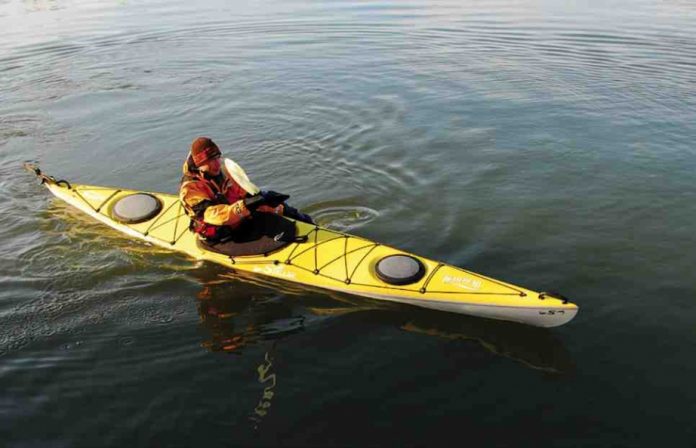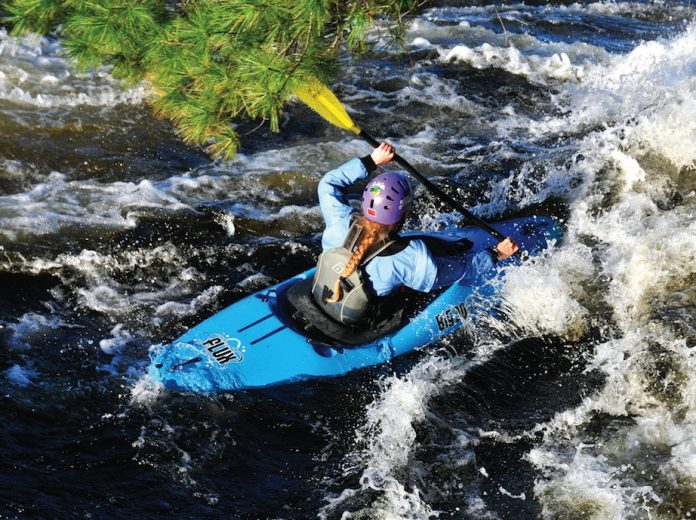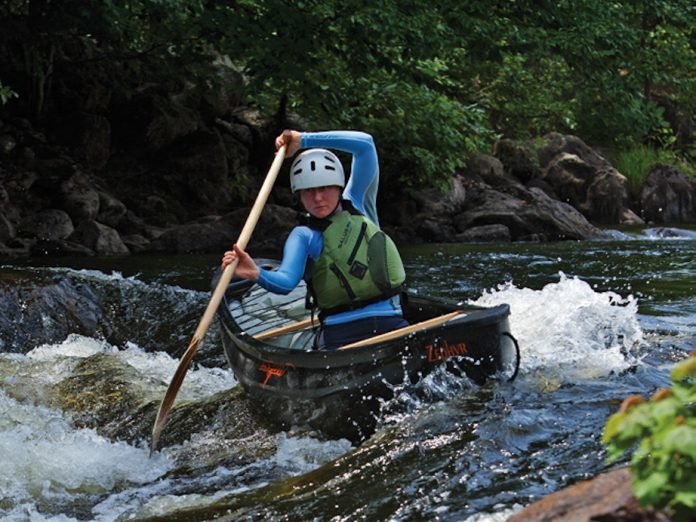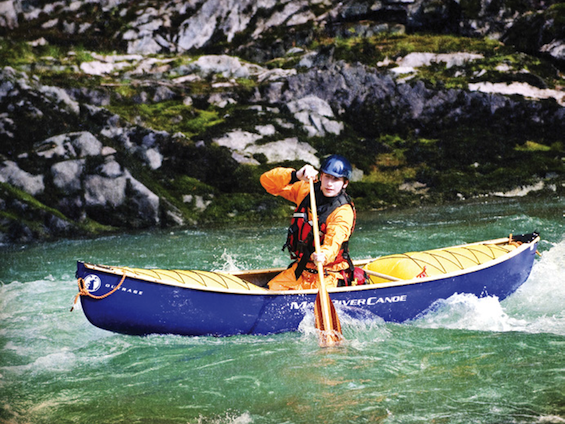This article on how to perfect your pry stroke was originally published in Canoeroots and Family Camping magazine.
All pries use the paddle shaft as a lever against the gunwale to move the canoe away from the paddle. The resulting action of the canoe differs depending on the placement of the pry, whether the canoe is moving (dynamic) or not moving (static), and whether the pry is used in a solo or tandem situation. These four useful solo maneuvers are performed using variations of this adaptable stroke.
Solo Offside Abeam
STROKE Dynamic pry
WHEN Use to move the canoe directly sideways away from the side you are paddling on.
HOW This pry uses short, quick motions to lever against the gunwale. Rotate your upper body toward the onside gunwale and place the paddle at your hip with the shaft vertical and the powerface of the blade against the hull. Pull the paddle grip across your chest. Once your control hand reaches the canoe’s center- line, turn your control thumb out and slice the blade back under the canoe to repeat.
TIP Think of your shaft hand as an oarlock, and keep the paddle shaft anchored to the gun- wale throughout. Avoid rocking the canoe back and forth as you pull.
Solo Offside Sideslip
STROKE Stationary pry
WHEN Use to sideslip the canoe around an obstacle without having to turn, change direction or sacrifice speed.
HOW Get some speed paddling forward. At the end of a forward stroke, turn your control thumb back and slice the blade into the hull at your hip. The powerface is facing the hull. the blade should be slightly angled in the direction you want to go. Keep the blade in this static position. Weight your onside knee so the canoe meets the least amount of water resistance as it moves sideways.
TIP: Adjust the paddle shaft slightly forward or backward of your hip to ensure that the canoe does not turn as it moves sideways.
Solo Offside U-turn
STROKE Sliding pry
WHEN Use to turn the canoe around 180 degrees without switching paddling sides. This elegant, exciting offside turn requires good boat control and balance.
HOW Initiate the turn with a forward sweep, edging the canoe to the outside of the turn. Following the sweep, knife the leading edge of the paddle blade to meet the hull. The paddle shaft is vertical and the force of the water is on the back of the blade. Smoothly slide the vertical paddle shaft along the gunwale toward the bow as far as you can comfortably reach, rotating your onside shoulder forward.
TIP Maintaining an upright body position (j-lean) is essential for keeping your balance.
Offside Capsize Recovery
STROKE Righting pry
WHEN Use to recover your balance and prevent a capsize to the offside. if you are tipping away from the side you are paddling on, the righting pry is a very effective and powerful correction that takes guts and commitment.
HOW Slice the paddle toward your hip, keep- ing the paddle shaft vertical. set the shaft against the gunwale and turn your control thumb back so the blade is parallel with the canoe. push down on the grip to submerge the blade deep in the water. pull the grip toward you, past the centerline.
TIP Push down on the grip and choke up your shaft hand to submerge the blade deep in the water for a successful pry.
—Words and photos adapted from Gary and Joanie McGuffin’s Paddle Your Own Canoe.
This article originally appeared in Canoeroots & Family Camping, Early Summer 2011. Download our freeiPad/iPhone/iPod Touch App or Android App or read it here.



